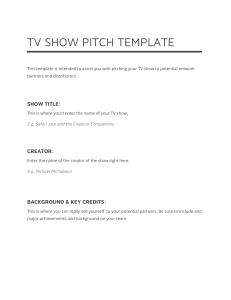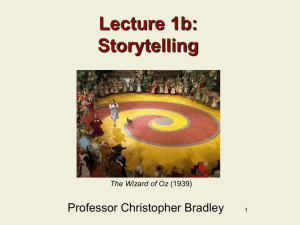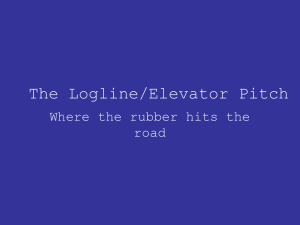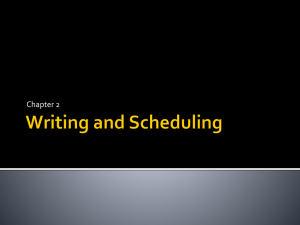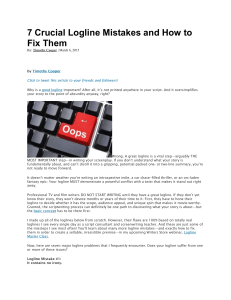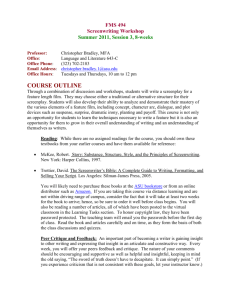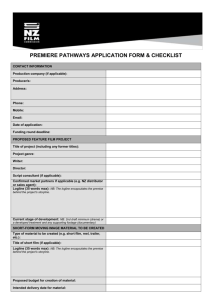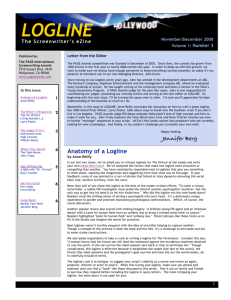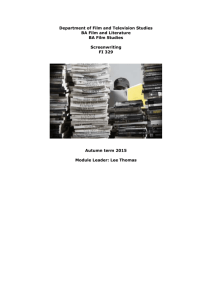Write a Logline and a Scene
advertisement
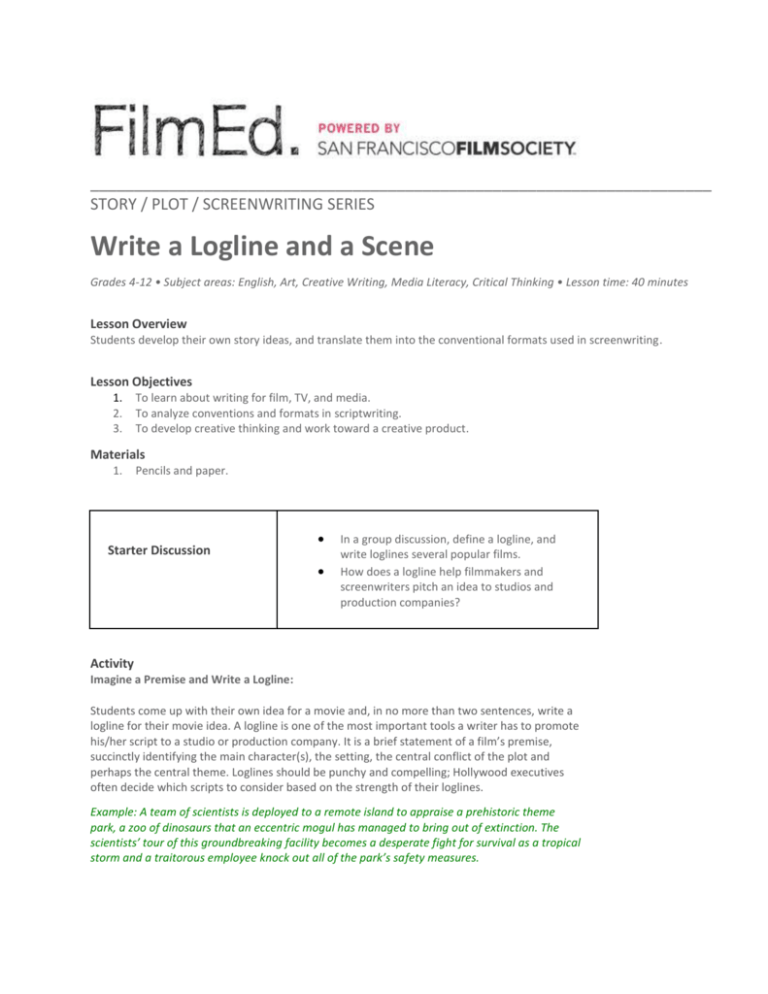
_______________________________________________________________________ STORY / PLOT / SCREENWRITING SERIES Write a Logline and a Scene Grades 4-12 • Subject areas: English, Art, Creative Writing, Media Literacy, Critical Thinking • Lesson time: 40 minutes Lesson Overview Students develop their own story ideas, and translate them into the conventional formats used in screenwriting. Lesson Objectives 1. 2. 3. To learn about writing for film, TV, and media. To analyze conventions and formats in scriptwriting. To develop creative thinking and work toward a creative product. Materials 1. Pencils and paper. Starter Discussion In a group discussion, define a logline, and write loglines several popular films. How does a logline help filmmakers and screenwriters pitch an idea to studios and production companies? Activity Imagine a Premise and Write a Logline: Students come up with their own idea for a movie and, in no more than two sentences, write a logline for their movie idea. A logline is one of the most important tools a writer has to promote his/her script to a studio or production company. It is a brief statement of a film’s premise, succinctly identifying the main character(s), the setting, the central conflict of the plot and perhaps the central theme. Loglines should be punchy and compelling; Hollywood executives often decide which scripts to consider based on the strength of their loglines. Example: A team of scientists is deployed to a remote island to appraise a prehistoric theme park, a zoo of dinosaurs that an eccentric mogul has managed to bring out of extinction. The scientists’ tour of this groundbreaking facility becomes a desperate fight for survival as a tropical storm and a traitorous employee knock out all of the park’s safety measures. Write a Scene Based on Your Logline Imagine students were to write the feature script for the movie for which they’ve written a logline. What would the most important scenes be? Students choose one scene from their movie idea and write a draft, including all dialogue, pertinent character action, narration (if any), sound effects, props, etc. Camera directions should not be included in any scene script. Follow-up Discussion ● ● ● How are film scripts different than other forms of creative writing that you have seen in your English and Language Arts classes? What is the purpose of the formatting conventions used in screenwriting? What do you think makes a good screenplay? Follow-up Activities/Homeworks ● ● You may choose to encourage students to act out their scenes or to film their scenes in the classroom or at home. Journaling Activity: ask students to reflect on their writing experience. How is writing a screenplay different than other creating you have done in school and on your own? Would you like to write more screenplays? Why or why not? Framework For Assessment Students may present individual work to the class to demonstrate that they have engaged with the assignment and grasped the learning goals. You may choose to supplement discussion with a short writing assignment to encourage quieter students to articulate their experience with the lesson. You may choose to assign formal grades to student screenplays or follow-up activities. Common Core Standards in this Lesson ● ● Filmmaking lessons may provide an entry point to the Common Core’s framework of creativity, collaboration, critical thinking, presentation and demonstration, problem solving, research and inquiry, and career readiness. The Story/Plot/Screenwriting series equips students to analyze the “extensive range of print and nonprint texts in media forms old and new,” as outlined in the Common Core definition of workplace readiness.
